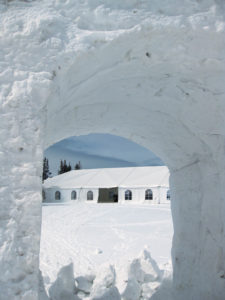
As tents and heating options improve and more cold-weather events take place, tent rental companies are eyeing winter installations with interest—and caution.
Howling 30-mile-per-hour winds. Crews having to go inside every 15 minutes to warm up. Snow for the entire 10 days of setup, so much of it that snow removal crews had to haul the stuff away because there was no place left on-site to pile it up. And a severe winter blizzard striking during tear-down, resulting in a 24-hour work delay. What company would even think of tackling a job under these conditions?
“Luckily, the property owners understood the risks we were taking in working in a blizzard and gave us the extra time we needed to get the job done safely,” says Michelle McCulloch, recalling when the company provided the tents and floor for the 2009 NHL All-Star Game in Montreal, Quebec, Canada. McCulloch is senior sales consultant for Regal Tent Productions Ltd., a tent rental company headquartered in Stoney Creek, Ontario, Canada.
Winter tent installations can offer tent rental businesses attractive benefits. For example, although winter tent installations comprise only about 10 percent of Regal’s business, the company’s ability to work in harsh weather does put more opportunities in front of it, McCulloch says.
Winter installations make up a relatively small portion of the total business for Special Event Rentals of Edmonton, Alberta, Canada, says Lars Erickson, director of business development.
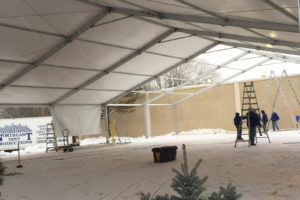
“Tent installations seem to be continuing later in the fall and starting earlier in the spring,” Erickson says. “We’ve expanded our tent inventory to include clearspan structures, allowing us to serve our customers’ needs for larger tents in the winter months.”
Although winter tent installations bring difficulties, utilizing the company’s tent inventory during slower months is a nice bonus, Erickson says. Another plus is increasing the job’s value by offering additional rental items such as heaters and doors.
Keeping crews busier than they would normally be is another reason to like winter installs, says Tom Wodetzki, co-owner of American Pavilion, a family owned tent-rental business headquartered in Danville, Ill. Wodetzki says approximately 20 percent of American Pavilion’s business is comprised of winter installs. This has been growing slowly over the last 10 years, primarily due to the company’s clearspan inventory and the increasing use of these tents by construction companies.
The first five years American Pavilion did winter installs were a bit rough, Wodetzki says. “No one really likes working when the snow is falling and the wind chill is below zero. But my crews have grown accustomed to cold-weather installations now—although these aren’t for everybody because of the difficult working conditions.”
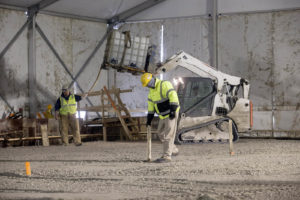
What? Me worry?
Every tent installation requires planning for what could go wrong, but strategizing is even more necessary when it comes to winter jobs. In these cases, the best approach is to imagine the very worst happening, says Brian Richardson, president of L&A Tent Rentals in Trenton, N.J.
“Cold weather can damage the fabric,” says Richardson, adding that winter installs comprise about 10 percent of their business. “We’ve had instances where the extreme cold has caused the fabric to cold-crack. Cold weather can also double or in some cases triple installation times. And what is the plan if you receive 12 inches of snow the day before the installation is set to begin?”
Joseph Hynes, president and co-owner of Northeast Tent Productions, a tent-rental business headquartered in Stamford, Conn., also advises brainstorming worst-case strategies and discussing with clients any variables that could come into play. This planning should encompass the days and even weeks leading up to the event, he adds.
For example, much of Hynes’ company’s winter work—which accounts for about 20 percent of its total business—involves covering decks or flagstone patios. “A snowfall and a deep freeze in the days or weeks prior can leave the area frozen solid with inches of ice,” he says. “Reminding the client to keep the area cleared after any weather event will make the install go much smoother and save unplanned labor costs to chop or melt the ice.”
Tools can also be affected by extreme temperatures, causing frustrating and potentially costly delays. McCulloch recalls a job where they were building a level floor inside a tent.
“The weather was so cold the laser level we were using froze,” she says. “We had to warm the level inside, then bring it out to use in the cold weather until it froze, and then bring it in to warm up again. You can see how this would add a lot of time to any installation.”
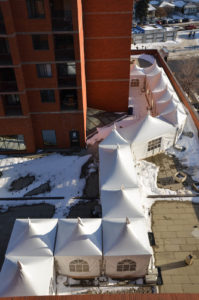
Another consideration is that generally most tents aren’t snow-load rated, McCulloch adds. This leaves event planners with two options: they can either heat the tent during snowy weather to prevent ice and snow buildup or, if that isn’t possible, the tent must be engineered and modified to give it a snow-load rating, McCulloch says.
Wodetzki also cautions anyone working on winter tent installations to be aware of fabric shrinkage. “We’ve used both laminated and coated fabric from a number of suppliers and we’ve found that in cold temperatures all fabrics will shrink in length and width—some more than others. Even a half-inch of shrinkage in width can mean the difference between a roof panel gliding easily onto the tent and one that’s too tight to even pull on.”
Heating up profit
It’s easy to lose money—lots of it—on winter rentals, Wodetzki says. So much must be taken into account to price profitably. “Additional labor costs are a given due to the difficult nature of working in sub-freezing temperatures,” he says. “Depending on the location of the jobsite, equipment, rentals, hotels, food and airfare may cost more if the location is even somewhat remote.”
These jobs are simply more expensive to do, McCulloch says. Additional install and removal time must be factored in, extra site maintenance such as snow and ice removal could be required, and the crew must be provided with the appropriate cold-weather gear.
Chad Struthers, vice president of Warner Shelter Systems Ltd., says that not charging enough is one common mistake he sees tent rental businesses making. Located in Calgary, Alberta, Canada, the company manufactures party tents and fabric-clad structures. About half of its business involves working in cold weather or providing product or advisors for companies installing in cold weather.
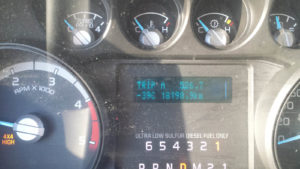
According to Struthers, cold-weather installs could take anywhere from two to three times longer than warm-weather jobs. Equipment doesn’t work as well, breaks down or freezes; crews need warming breaks; fabric can become stiff, hard to work with, even damaged (he advises storing fabric until it’s time to put it up); and cold-weather clothing slows people down. Additional generators, heaters or batteries may be needed. Absent a place for the crew to get warm, a truck (or trucks) will need to run continuously to provide shelter, requiring extra fuel. Consequently, says Struthers, rental companies in his area charge install rates three times higher or more for winter jobs.
The maintenance a tent might require after installation is another consideration, says Hynes. “I remember one New Year’s Eve having a number of jobs set for parties. A large blizzard moved through the area the day prior. We spent seven to eight hours going from job to job clearing snow from tent tops, and additional hours once the storm passed digging out heaters and doorways. It’s important to calculate these cost possibilities into proposals.”
Despite the challenges, this work still appeals, he adds. “Winter events provide a nice extension to the rental season. With the proper planning, the jobs can be profitable and provide some nice income during a time that’s typically slow.”
[ Pamela Mills-Senn is a freelance writer based in Long Beach, Calif. ]
Crew safety is always paramount, but working safely in cold weather requires following an additional set of jobsite best practices.
Chad Struthers, vice president of Warner Shelter Systems Ltd., says companies should ensure crews are dressed appropriately in clothing that wicks away moisture and have extras of everything, especially gloves and socks. Crews should be educated about how winter gear can impact safety. For example, facemasks can make it hard to see, reducing peripheral vision and increasing the possibility of getting hit by equipment. “You literally have to turn your body around in order to see to the left and the right,” he says.
Tom Wodetzki, co-owner of American Pavilion, says his company’s crew leaders are trained to spot the beginning signs of frostbite and on the need for crews to take warming breaks and stay hydrated.
Keep an eye on the weather, says Lars Erickson, director of business development for Special Event Rentals. His company’s safety policy stipulates that if heavy snow or high winds are forecasted, it won’t install the tents.
“Our clients are made aware of this policy when they first contact us,” he says. “We suggest they have an alternate plan in the case of extreme weather.”
 TEXTILES.ORG
TEXTILES.ORG


